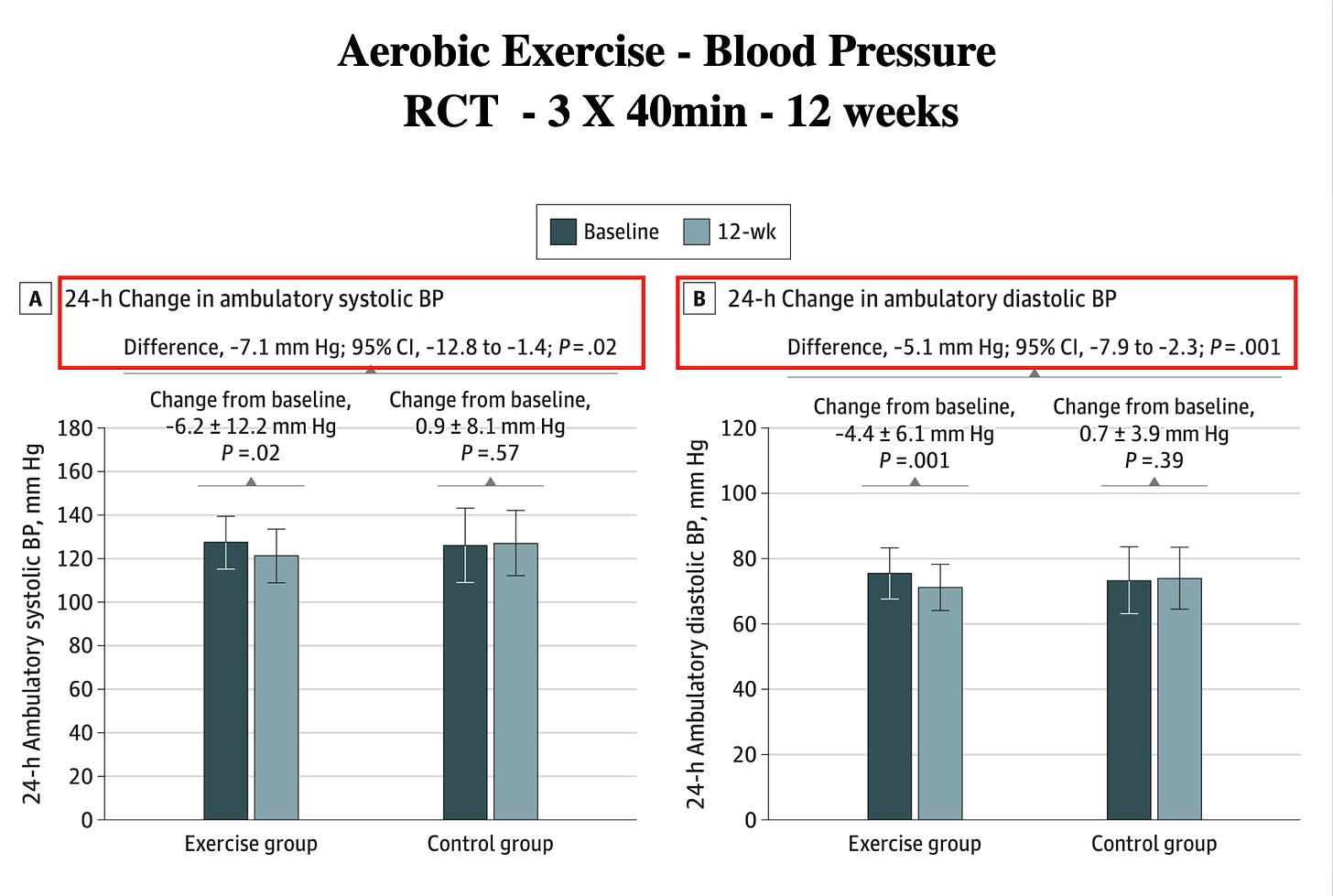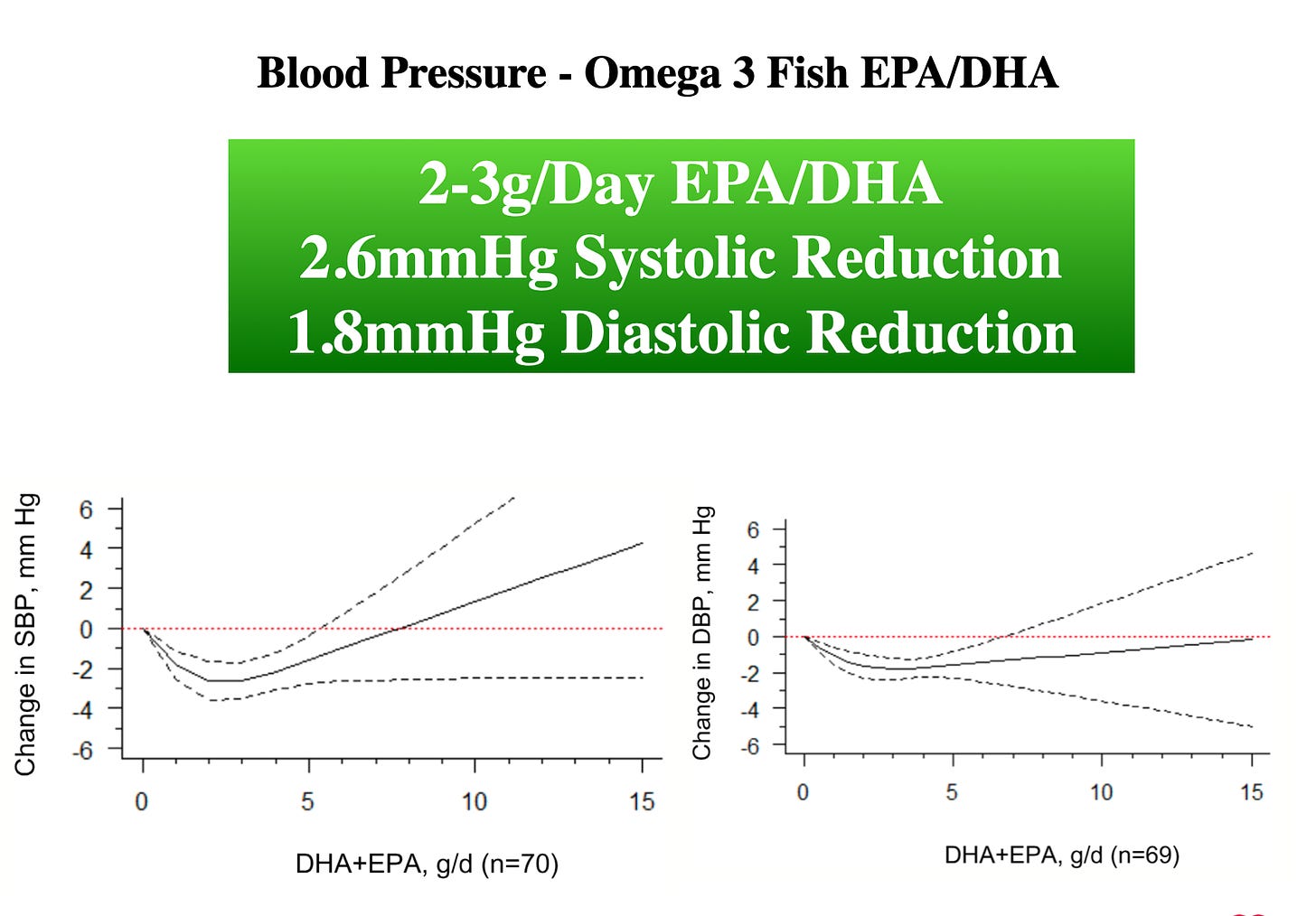A Lifestyle Approach To High Blood Pressure

On the morning of April 12th, 1945, US President Franklin D Roosevelt developed a severe headache while sitting to have his portrait painted. His blood pressure was recorded at 300/190mmHg. Shortly after, he lost consciousness and died.
Before the 1950s, very little was known about high blood pressure. Today, we know a lot more. High blood pressure, defined as a blood pressure greater than 140/90mmHg, is estimated to affect about 30% of the world’s population1. Between 1990 and 2019, the number of adults with high blood pressure doubled2.
Given that high blood pressure is a key driver of:
-
Coronary artery disease
-
Heart attack
-
Stroke
-
Heart Failure
-
Dementia
-
Kidney Disease
It appears that a lot of people have a very big problem that they may not even know about.
So let’s start with some basics.
What is a normal blood pressure?
Just like everything in biology, the answer is not so simple.
And a lot depends on what you mean by ‘normal’.
A blood pressure of less than 120/80 mmHg is generally accepted as a normal blood pressure. However, data suggest that even systolic (Top Number) blood pressures above 90mmHg have added risk for coronary artery disease. And even within this range, for every 10mmHg increase in systolic blood pressure, there is a 53% increased risk of coronary artery disease3.
For blood pressures above 120mmHg systolic, for every 20mmHg increase, the risk of death from a stroke or heart attack doubles4.

Interestingly, hunter-gatherer tribes such as the Tsimane tribe in Bolivia have average systolic blood pressures of 120mmHg, and this data includes those over 80 years of age5. For members of the tribe under age 60, the average systolic blood pressure was only 112mmHg.
Clinically, ‘not normal’ blood pressure is defined as the blood pressure above which the risk of a complication justifies starting a blood pressure medication. That cut-off is debated, but generally, repeated blood pressures above 140mmHg usually justify blood pressure treatment, and above 130mmHg ‘may’ justify treatment. The devil is in the detail, though.
Regardless of the elevated blood pressure category, lifestyle interventions are recommended as the first line for everyone. When lifestyle changes are aggressively pursued, blood pressure often returns to normal. Patients once on treatment for high blood pressure often no longer need medications and can safely come off blood pressure lowering medications.
Intensive lifestyle interventions can seem almost miraculous when it comes to high blood pressure. The problem is that most people start too late or do not achieve the degree of change necessary to lower their blood pressure.
A normal blood pressure achieved from appropriate lifestyle changes is likely to have a greater risk reduction than a normal blood pressure reached due to drug treatment.
So before commencing a blood pressure treatment, I would argue that every patient must engage in an aggressive lifestyle approach to lower their blood pressure.
Some patients will not be able to do this, and in some patients, because their blood pressure is so high, medications will need to be prescribed at the outset.
But let’s start with some lifestyle and non-drug targets to address high blood pressure.
Exercise
AT LEAST 150 minutes of moderate-intensity exercise or 75 minutes of vigorous exercise per week is recommended for all adults.
Moderate intensity exercise is fast walking (Not a stroll), cycling, or doubles tennis. Vigorous intensity exercise is defined as running, cycling fast or playing soccer.
Ask if you are meeting these targets every week. A regular paced walk does not count as moderate-level activity. But of course, all activity helps.
Now recognise that this recommendation is the lower bound. In truth, most adults should be doing more. Yes, you must start small and build up. But most adults will recognise they fall short of the recommended weekly activity levels.
Over 3 months, even 120 mins of weekly aerobic exercise can lower systolic blood pressure by 7mmHg. Think of what a lifetime of even more exercise could achieve.

Overweight Obesity
Over 50% of the world's adults are either overweight or obese6.
At least 75% of high blood pressure is related to overweight or obesity7.
Most people are very surprised to learn they have high blood pressure.
Many people are also surprised to learn that they are overweight or obese.
It should be no surprise that weight loss is vital to lowering blood pressure.
Weight loss is a complex, difficult process, but it does not change the relationship between overweight/obesity and high blood pressure.
Salt
A long-standing recommendation for preventing high blood pressure and for those with high blood pressure has been to reduce salt intake.
The relationship between salt and high blood pressure is far more complex than we once believed.
Recent data from a large randomised controlled trial has shown that substituting standard salt (Sodium Chloride) with 25% potassium chloride reduced strokes by over 25% and death from any cause by about 12% 8. This was over 5 years, so the effects may be even more over extended periods. A critical question is whether the difference was due to the reduction in standard salt (Sodium Chloride) or simply the addition of potassium. Whichever is the case, this is a straightforward intervention with a significant impact on cardiovascular risk.
Insulin Resistance
For years before a person develops diabetes, how a person metabolises sugar is abnormal but rarely tested for. Higher levels of insulin in the blood indicate that it is taking more insulin release from the pancreas to do the same job as before to handle the same glucose levels. As insulin levels increase, so too does blood pressure9. These elevated blood insulin levels can be present for years before any changes in your blood glucose levels become apparent. Likely, the increases in blood pressure we see with overweight and obesity are likley related to increasing levels of insulin resistance. The good news is that insulin resistance is reversible with appropriate nutrition and exercise modifications. Although some medications can improve insulin resistance, the primary modifier is lifestyle change.

Omega 3 Fish Oils
Supplementation with the omega 3 fish oils, EPA and DHA, have been shown to marginally lower blood pressure10. The doses used were relatively high in the range of 2-3g per day, and the blood pressure reduction was modest, with systolic blood pressure reductions of 2.6mmHg. While it is tempting to think that all is required to lower blood pressure is supplementing with omega 3 fish oils they should really be considerd as supplemental to an aggressive lifestyle approach and not as a substitute for it.

If you have been diagnosed with high blood pressure it is crucial to explore whether you have given sufficient attention to the topics above. Most high blood pressure is labelled ‘Essential Hypertension’ which is our way of saying ‘We don’t know the cause’. But I would wager that if everyone with ‘Essential Hypertension’ met all the targets outlined here, the need for high blood pressure medications would drop dramatically.
Blood pressure lowering medications lower blood pressure and reduce the likelihood of heart attack and stroke. However, most people with high blood pressure are probably not doing all they can to lower it without the need for high blood pressure medications.
If high blood pressure is an issue for you, ask yourself if you are meeting all the targets above.
The time is now.
Your heart, brain and kidneys are on the line.
So too is your life.
Association of Normal Systolic Blood Pressure Level With Cardiovascular Disease in the Absence of Risk Factors. JAMA Cardiol. 2020;5(9):1011–1018.
Prospective Studies Collaboration. Age-specific relevance of usual blood pressure to vascular mortality: a meta-analysis of individual data for one million adults in 61 prospective studies. Lancet. 2002 Dec 14;360(9349):1903-13
Very Low Prevalence and Incidence of Atrial Fibrillation among Bolivian Forager-Farmers. Ann Glob Health. 2021 Feb 16;87(1):18.
https://www.who.int/news-room/fact-sheets/detail/obesity-and-overweight
The relationship between obesity and hypertension: an updated comprehensive overview on vicious twins. Hypertens Res 40, 947–963 (2017).
Effect of Salt Substitution on Cardiovascular Events and Death. N Engl J Med. 2021 Sep 16;385(12):1067-1077.
Comparison of Fasting Insulin Level, Homeostatic Model of Insulin Resistance, and Lipid Levels between Patients with Primary Hypertension and Normotensive Subjects. Rambam Maimonides Med J. 2022 Apr 26;13(2).
Omega‐3 Polyunsaturated Fatty Acids Intake and Blood Pressure: A Dose‐Response Meta‐Analysis of Randomized Controlled Trials. JAHA. 1 Jun 2022. Journal of the American Heart Association. 2022;0:e025071




